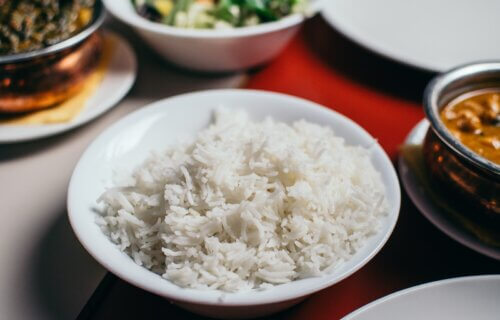SHEFFIELD, United Kingdom — Arsenic is a natural part of the Earth’s crust and is found throughout the environment. In its inorganic form, it is incredibly toxic to humans with both high-dose and low-dose exposure. The World Health Organization (WHO) has set limit recommendations on the amount of arsenic permissible in drinking water, but new research shows close to 32 percent of the world’s population live in nations that don’t adhere to it.
Previously, the WHO set a limit of 50 parts per billion (µg L-1) for inorganic arsenic in water, which has since been reduced to 10 µg L-1. Arsenic limits were and remain especially important for Asian countries like China, Bangladesh, Pakistan, Cambodia, Thailand, Myanmar, and Nepal, where rice is a food staple.
Food and water are some of the main sources of human exposure, the former often because contaminated water is used in crop irrigation and the preparation of food. The new research from the University of Sheffield has revealed that several low and middle-income countries are at risk of serious health complications from arsenic exposure due to lack of proper regulation.
“Both rice and drinking water in the UK are regulated for arsenic, but further afield in Asia and Africa, there is often very little or no regulation to current WHO standards. We know that as many as 40 countries in the world allow more than 10 parts per billion in drinking water, and 19 countries have no evidence of any regulations,” says research lead Dr. Manoj Menon, from the University of Sheffield’s Institute for Sustainable Food and the Department of Geography, in a media release.
“Rice is one of the major cereal crops in the world, contributing to the dietary energy and nutrition of more than half of the world’s population. We already know that rice has more arsenic than other cereals, and the risk is exacerbated if we cook rice with arsenic-contaminated water above the WHO recommended limit. That is why it is vitally important that countries worldwide work to adopt the latest WHO recommendations to ensure arsenic exposure is minimized as much as possible to protect the public.”

This research looked at various levels of inorganic arsenic in cooking water, including 10 and 50 µg L-1, and used arsenic-safe tap water from the U.K. (which contains less than 0.2 parts per billion) as a control.
“Obviously, for people in countries where rice is a staple food, consumption is higher and the health risk also increases, such as in many parts of Asia. People in the UK may only consume around 5kg of rice annually, but the average global consumption is 57kg, and even higher at 85kg across Asia,” Dr. Menon says.
“In this study, we evaluated the exposure risks to the Bangladesh population–the highest per capita rice consumers in the world at approximately 170 kg per person, and found that nearly all age groups are at significant risk. Policymakers in those countries with high rice consumption rates urgently need to develop measures to supply arsenic-safe water for domestic use.”
Studies from the past have shown that the way rice is cooked is important for reducing the amount of arsenic, demonstrating that certain methods can remove more than half of the arsenic within the grains. This time around, the researchers tested white and brown rice against using excess water (EW) and parboiled and absorbed (PBA) cooking methods. The work concluded that if there is no access to arsenic-safe water, the best way to cook rice is through the EW method, which involves draining excess water to slash the numbers.
“One of the United Nations (UN) Sustainable Development Goals for good health and wellbeing is for everyone to have access to clean water and sanitation. This cannot happen without regulations being implemented in countries where limits or water testing are not currently in place,” explains Dr Menon.
“There are genuine concerns for rice consumers about consuming arsenic, but our successive studies have shown there are ways we can try to minimize our risk of exposure. Even in countries where there may be higher levels of inorganic arsenic in water supplies, where possible, this includes selecting varieties of rice that don’t absorb as much arsenic and using cooking methods that remove as much arsenic from the water and grains as possible.”
A Dietitian’s Take
Arsenic is a public health concern, and exposure is most common through food and water. In the United States, arsenic poisoning isn’t as common as it is in some parts of Asia. However, even in Asia, it’s important to know that despite culturally eating far more rice than the average Westerner, many don’t experience this poisoning from rice.
Instead, they’re more likely to encounter arsenic through contaminated drinking water. Arsenic is pretty difficult to completely avoid, and it’s therefore unrealistic to expect to dodge it entirely. Rice is one of the most commonly criticized foods because of its arsenic content, but other foods like fish, shellfish, dairy, and meats can contain it as well.
Even so, it’s never a bad idea to be mindful and reduce your exposure within your means. As stated by the researchers, the current literature suggests that using the excess water method for cooking rice can significantly reduce the amount of arsenic content. Additionally, brown rice generally contains more arsenic than white rice, so a simple swap of the two can help. I don’t think that in the Western nations with strong regulatory practices, and even many Asian countries, we should be overly worried about the arsenic in rice. More likely sources are contaminated water and industrial exposure. So, there’s no need to give up your rice for good, but awareness is key.
